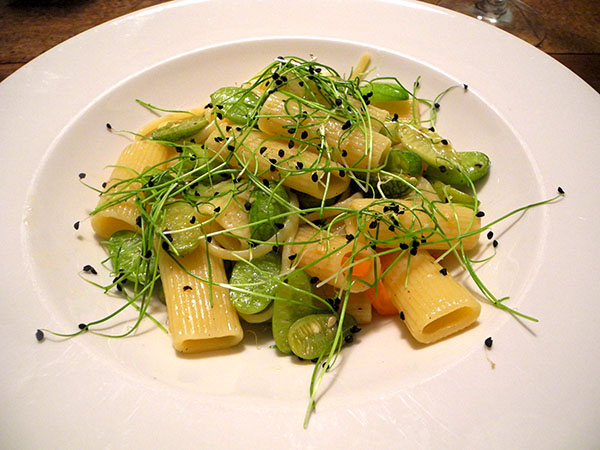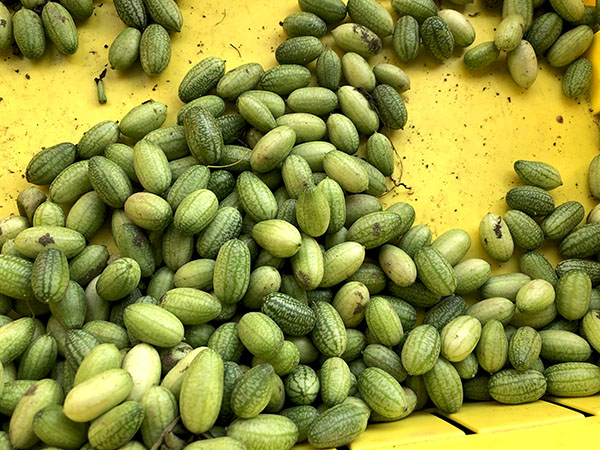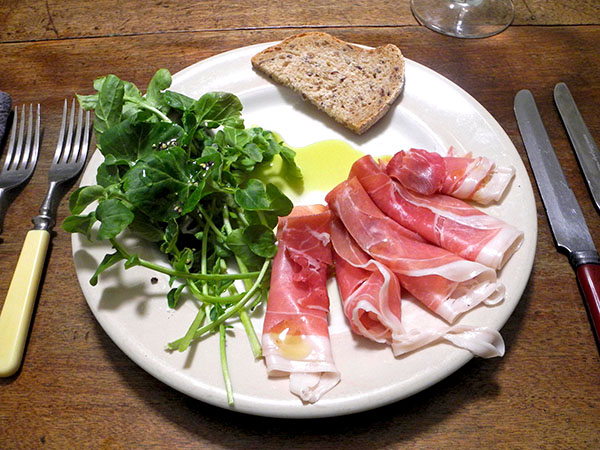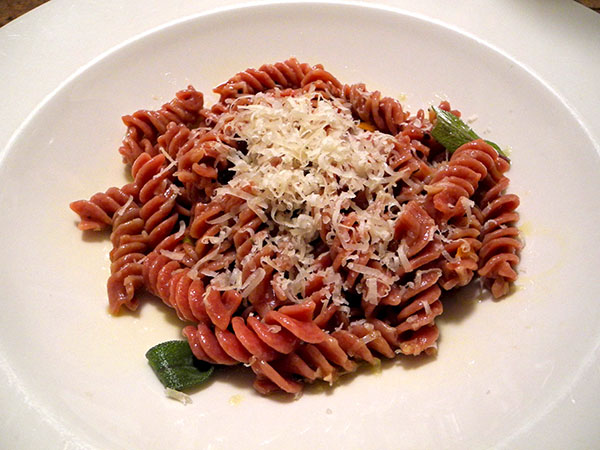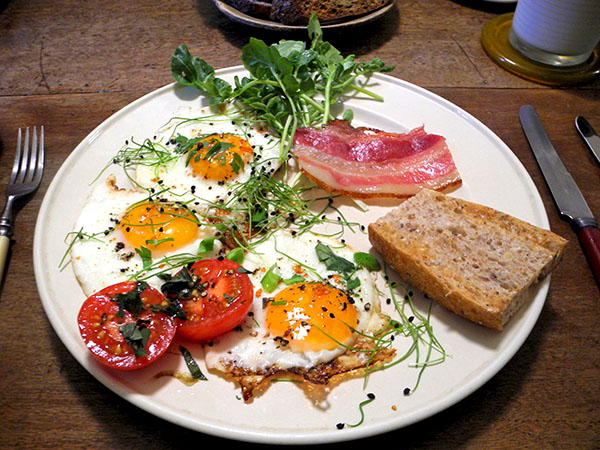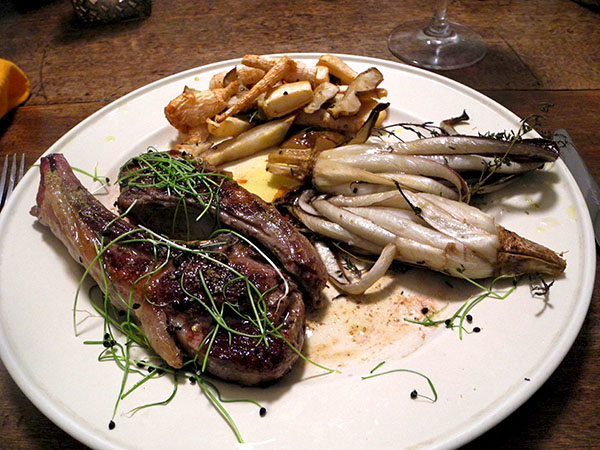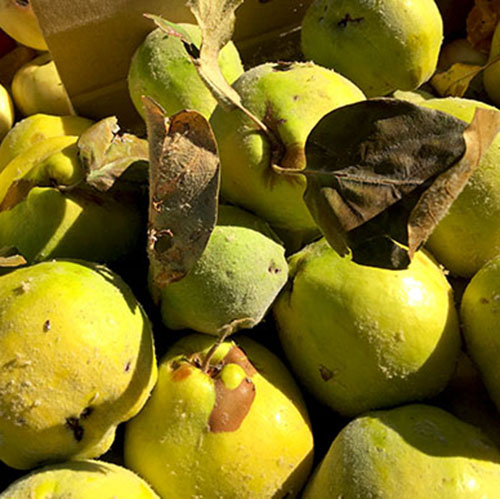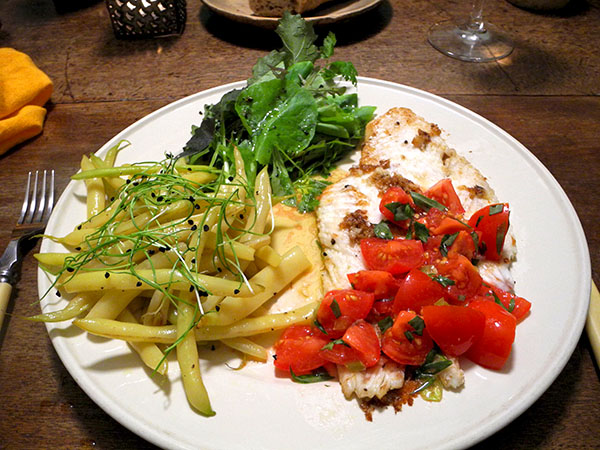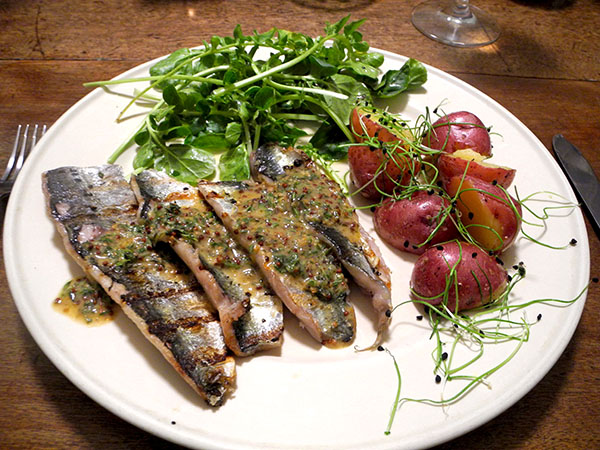
How about 2 herring servings for $6 and change? Sure, they had to be prepared at home, but that part was no charge, and a lot of fun (not to mention the bonus of its ensuring we could enjoy the style and comfort of a venue we’d created ourselves).
Herring is, by the way, one of the healthiest protein sources around, and one of the most delicious if cooked sensitively, that is, with some form of acid to complement the dark flesh of the fish.
“One of the great underappreciated dark-fleshed fish..” – Mark Bittman
Barry and I are very lucky to live in a part of the world where there are an extraordinary number of varieties of seafood in local waters, where most are judged plentiful enough to be harvested by smaller operators, where those fishers want to make them available fresh for retail purchase by ordinary people in a central public market within a short but healthy walking distance, and where I enjoy the time needed to seek them out and prepare them using the best of my skills and some good kitchen tools.
On Monday afternoon, to top it off, I was able to bring home the noble herring praised in the Bittman text above. I thought I had hit the jackpot. The quote, from his book, ‘Fish: The Complete Guide to Buying and Cooking‘, continues, mentioning that herring is rarely available fresh in the US: “If you are lucky enough to find some, cook it using any mackerel or sardine recipe.”
Even more splendid: My own suppliers had gone through the trouble of filleting these wonderful small fish. making them even more convenient to prepare at home.
Last night I was inspired by this BBC ‘good food’ recipe I found on line that same evening, adjusting it to my kitchen and the ingredients I had on hand. It was one I hadn’t tried before, and I decided on it last night because, after several recent dinners which had included fish fillets and cherry tomatoes, I didn’t want have one in which that fairly obvious ingredient was going to be featured once again.
- * nine small herring fillets (a total of 12 ounces) from P.E. & D.D. Seafood, rinsed under running cold water, drained, dried, brushed with a little olive oil and seasoned lightly with sea salt and freshly-ground black pepper, arranged on a double cast iron grill pan which had gotten very hot over 2 high burner flames, grilled, skin side down, for l to 2 minutes, turned over and cooked for 1 to 2 minutes more, drizzled with a little olive oil, arranged on 2 plates and served with a sauce which had just been mixed in a small bowl, of mustard (half whole-grain Maille ‘Old Style’ whole grain Dijon, and half Domaines des Vignes ‘extra forte‘ Dijon), the chopped leaves removed from a large bunch of thyme branches from S. & S.O. Farm, a teaspoon of Linden honey from Tremblay Apiaries in the Union Square Greenmarket), the zest and juice from one Whole Foods Market organic lemon, and a bit of olive oil
- upland cress from Paffenroth Gardens, dressed with olive oil, Maldon Salt, freshly-ground black pepper, and juice from an organic Whole Foods Market lemon
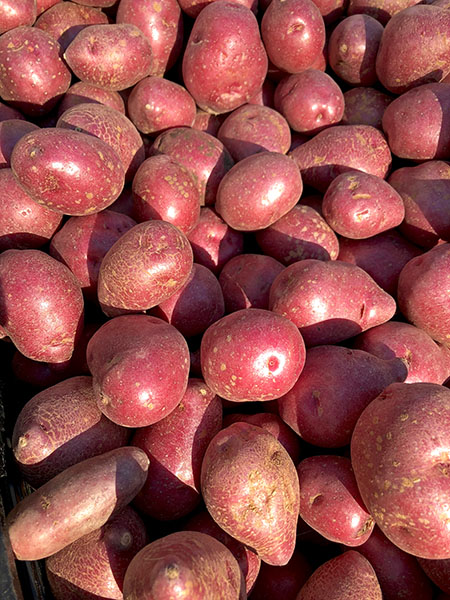
- three medium-size unpeeled Red Norland potatoes from Berried Treasures farm, boiled with a generous amount of salt until barely cooked through, drained, halved, dried while still inside the large still-warm vintage Corning Pyrex Flameware blue-glass pot in which they had cooked, tossed with a tablespoon or so of olive oil, sprinkled with sea salt, freshly-ground black pepper, and a generous amount of lovage from Keith’s Farm
- the wine was a Spanish (Rias Baixas) white, Martin Codax Albarino 2016, from Philippe Liquors and Wines
- the music was Hector Berlioz’s 1846 légende dramatique, ‘La Damnation de Faust’, Myung-Whun Chung conducting the Philharmonia Orchestra and Chorus, with Anne Sofie von Otter, Bryn Terfel, Keith Lewis, Victor von Halem, with others
